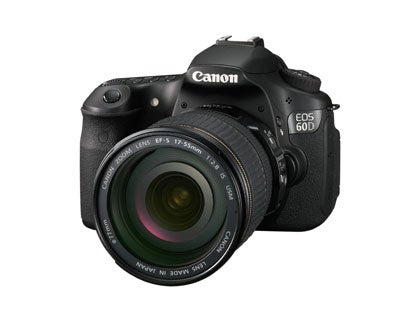UPDATED 8th November, 2012. Released at the end of 2010 the Canon EOS 60D succeeded the EOS 50D that came out in 2008. Despite being over two years old, the Canon EOS 60D is still listed as a current model within Canon’s DSLR range. But can it cut it against the newer competition. The What Digital Camera review finds out...
Canon EOS 60D Review
As the direct successor to the Canon EOS 50D, the Canon EOS 60D not only delivers 1080p Full HD recording, but also comes armed with a number of additional improvements over the older model, not least a new 18MP CMOS sensor, an improved 63-zone metering system, and a vari-angle 3:2 aspect 1.04m-dot rear LCD monitor (the 50D sported a fixed 4:3, 921k-dot monitor).
Not quite everything has changed for the better, however. For example, unlike the EOS 50D with its magnesium alloy cage, the outer casing of the EOS 60D is constructed primarily from polycarbonate resin. The addition of a number of in-camera creative features has also been seized upon by some as illustrative of how the EOS 60D is a slightly dumbed down version of its predecessor – something the EOS 50D was never accused of.
In terms of direct competition, the EOS 60D’s chief rival is the Nikon D7000. Released within months of the EOS 60D the Nikon D7000 is aimed at the same enthusiast market and, at the time of launch, was similarly priced. Despite also being two years old the D7000 is still listed as a current model within Nikon’s DSLR range. Interestingly, both the Canon 60D and Nikon D7000 have survived the introduction of newer DSLR models higher up their respective ranges – namely the Canon 6D and Nikon D600, both of which employ full-frame sensors rather than the APS-C chips found inside the EOS 60D and D7000.
Whereas both the EOS 60D and D7000 offer Full HD video recording there are quite a number of differences between the two models. Whereas the EOS 60D boasts a higher effective resolution (18MP vs 16.1MP) and a sharper vari-angle monitor (the D7000’s 921k-dot screen is fixed), the D7000 does get a tougher magnesium alloy shell, alongside a 39-point AF system that easily bests the 9-point AF system of the EOS 60D. In addition, the D700 offers an extra sensitivity stop above the EOS 60D’s top (expanded) setting of ISO 12,800.





